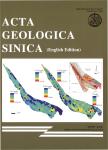Comparative Study of Acid and Alkaline Stimulants with Granite in an Enhanced Geothermal System
Comparative Study of Acid and Alkaline Stimulants with Granite in an Enhanced Geothermal System作者机构:Key Laboratory of Groundwater Resources and EnvironmentMinistry of EducationJilin UniversityChangchun 130021China Engineering Research Center of Geothermal Resources Development Technology and EquipmentMinistry of EducationJilin UniversityChangchun 130026China
出 版 物:《Acta Geologica Sinica(English Edition)》 (地质学报(英文版))
年 卷 期:2021年第95卷第6期
页 面:1926-1939页
核心收录:
学科分类:070801[理学-固体地球物理学] 07[理学] 0708[理学-地球物理学]
基 金:jointly supported by the National Key R&D Program of China(No.2018YFB1501802) the National Natural Science Foundation of China(No.41902309) funded by the Engineering Research Center of Geothermal Resources Development Technology and Equipment,Ministry of Education,Jilin University
主 题:hot dry rock granite rock Enhanced Geothermal System chemical stimulation reactive transport model
摘 要:The Enhanced Geothermal System(EGS) is an artificial geothermal system that aims to economically extract heat from hot dry rock(HDR) through the creation of an artificial geothermal reservoir. Chemical stimulation is thought to be an effective method to create fracture networks and open existing fractures in hot dry rocks by injecting chemical agents into the reservoir to dissolve the minerals. Granite is a common type of hot dry rock. In this paper, a series of chemical stimulation experiments were implemented using acid and alkaline agents under high temperature and pressure conditions that mimic the environment of formation. Granite rock samples used in the experiments are collected from the potential EGS reservoir in the Matouying area, Hebei, China. Laboratory experimental results show that the corrosion ratio per unit area of rock is 3.2% in static acid chemical experiments and 0.51% in static alkaline chemical experiments. The permeability of the core is increased by 1.62 times in dynamic acid chemical experiments and 2.45 times in dynamic alkaline chemical experiments. A scanning electron microscope analysis of the core illustrates that secondary minerals, such as chlorite, spherical silica, and montmorillonite, were formed, due to acid-rock interaction with plagioclase being precipitated by alkaline-rock interactions. Masking agents in alkaline chemical agents can slightly reduce the degree of plagioclase formation. A chemical simulation model was built using TOUGHREACT, the mineral dissolution and associated ion concentration variation being reproduced by this reactive transport model.



